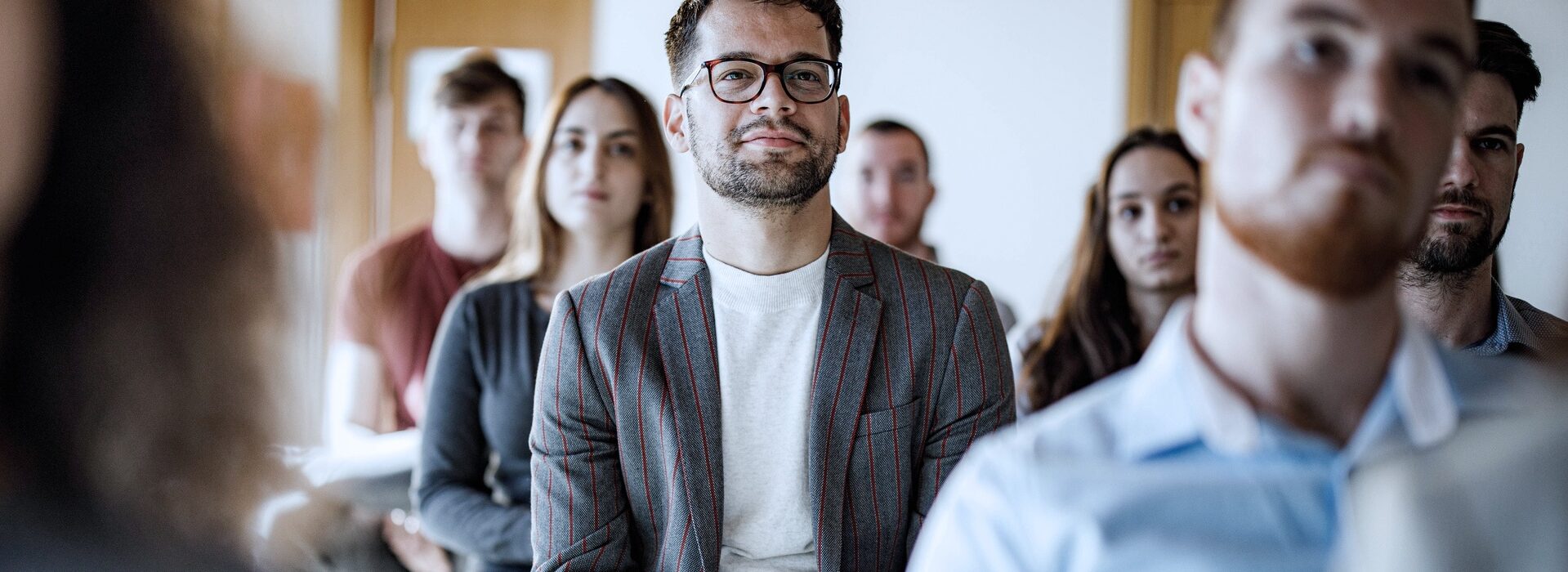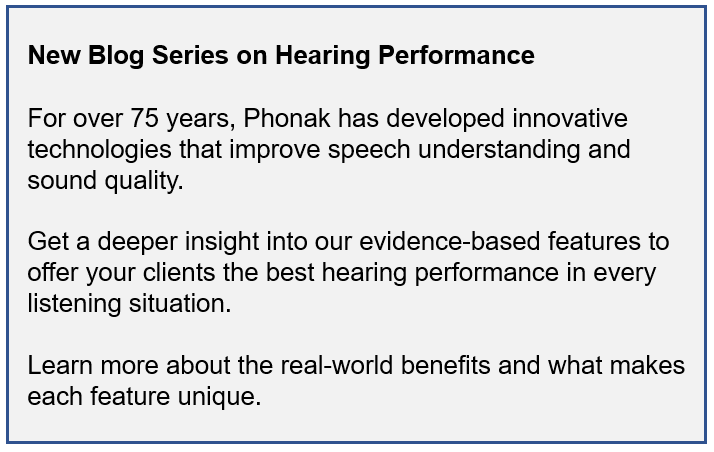
Roger™ technology: 3 real-world problems it solves
Understanding speech from a distance and in noise are rated as some of the most important needs by those with hearing loss. Learn how Roger, your client’s ‘third ear,’ can help.
Did you know that 31% of hearing aid wearers still have difficulty hearing in noise and over distance?1
Hearing aids can help in these situations, but they typically provide the most benefit when a speaker is within 1.5 meters (5 feet) of the listener. As soon as the noise increases and the distance between the listener and speaker becomes greater, additional technology is needed to maintain speech intelligibility and understanding while overcoming both distance and noise.
Roger is the solution for challenging listening environments. Roger microphones are designed to act as your client’s ‘third ear,’ detecting the person speaking and streaming their voice directly into your client’s hearing aids and/or cochlear implants.
The advanced wireless directional technology of Roger provides your clients with these 3 real-world benefits:
1. 3x better speech intelligibility in noise versus hearing aids alone,2 and not just for Phonak hearing aid wearers! Roger is compatible with almost all hearing aids and cochlear implants.
2. Better hearing in a variety of listening situations. Roger microphones can help in noise, at a distance, at the office, at school, and even when watching TV, making phone calls, and streaming media.
3. Compatibility with almost every hearing aid and cochlear implant on the market.*
Roger technology: what makes it special?
Phonak has a rich legacy of innovation in remote microphone technology spanning almost 30 years. Roger makes use of intelligent and adaptive algorithms that continuously measure and precisely analyze noise levels to keep the Roger signal clearly audible above background noise.
This advanced dynamic behavior has led to significant improvements in speech recognition in noise, especially at higher noise levels.
With the introduction of RogerDirect™ in Phonak Marvel hearing aids in 2018, clients wearing Phonak hearing aids can now connect Roger directly to their hearing aids without needing to attach an external receiver, making it easier to enjoy the benefits of Roger technology in their daily life.
Since 2013, Roger microphones have provided better hearing performance in noise and over distance in versatile form factors that can be conveniently used in a variety of challenging environments.
Surveys show that 90% of Roger users would recommend Roger to their friends and family.3 With new Phonak Trial™ hearing aids now including pre-installed Roger receivers, it’s never been easier to wow your clients with the performance of Roger technology.
References
- Abrams, H. B., & Kihm, J. (2015). An introduction to MarkeTrak IX: A New Baseline for the Hearing Aid Market. Hearing Review, 22(6), 16.
- Roger system consisted of Roger Neckloop and Roger Table Mic II with Phonak and non-Phonak hearing aids in 60 dB of background noise.
Lejon, A. & Smith, C. (2020). Speech improvement using Roger NeckLoop with different brands of hearing aids. Phonak Field Study News. Retrieved from www.phonakpro.com/evidence. Accessed November 28, 2022. - Taphuntsang, D. (2019). Market Research ID 1299. Please contact marketinsight@phonak.com if you are interested in further information.
*requires direct audio input or telecoil

To learn more about the features in Phonak Audéo™ Lumity, we invite you to visit our webpages.
